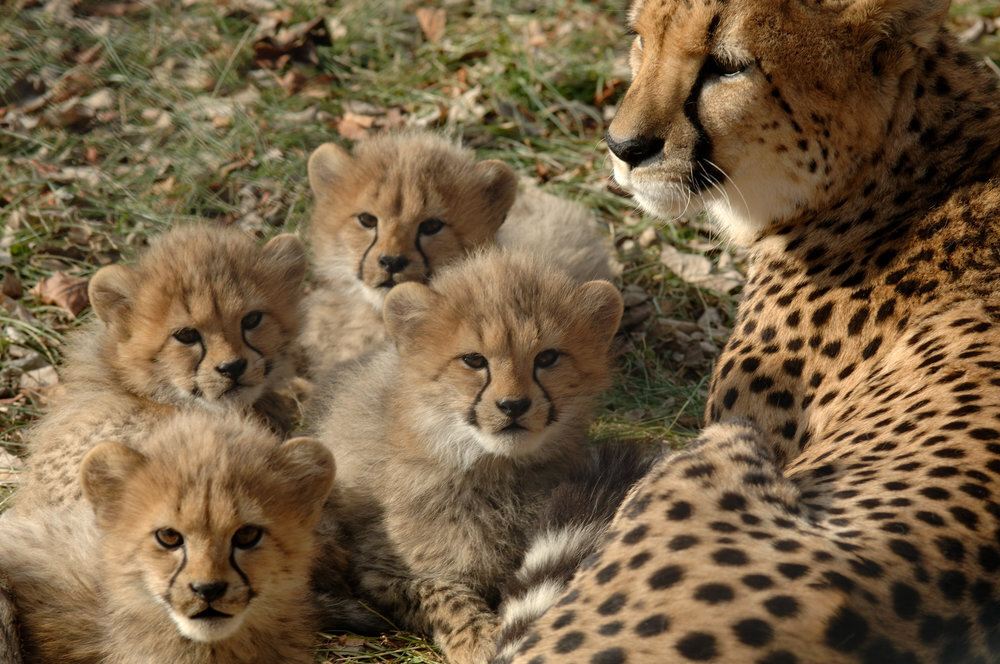INSUBCONTINENT EXCLUSIVE:
TEHRAN - The battle to save Asiatic cheetahs and prevent their extinction, complicated by various natural and human-induced threats, is in
full swing in habitats across Iran.In 2007, Iranian wildlife experts decided to mark August 31 as 'National Cheetah Day' in a bid to
relatively smaller than its African cousin
It has distinctive black tear marks running from its eyes down the side of its nose, fawn-colored fur that is paler on the sides, and small
black spots scattered on its body.Also known as the 'Persian cheetah', the species became extinct in virtually all countries in Asia and
only a small population continues to live in Iran
It is categorized as critically endangered on the International Union for Conservation of Nature (IUCN) Red List.They inhabit desert-like
mountain areas in central, eastern, and southeastern parts of the country, in wildlife refuges located in the provinces of Semnan, Yazd,
Kerman, and north, south, and Razavi Khorasan.Camera traps installed by environmental bodies in their habitats monitor the endangered
species' population to evolve ideal strategies for protecting them.However, serious threats primarily posed by habitat fragmentations,
drought spells, prey loss, persecution by livestock herders and their dogs, road accidents, and illegal poaching are shrinking the
vulnerable population of the world's fastest mammals.Roadkill, a main threatIn July, a two-year-old cheetah was killed on the
Abbasabad-Mayami road in the central Iranian province of Semnan
This is where most Asiatic cheetahs have over the years been hit by vehicles and lost their lives.In March, another cheetah, pregnant with
three cubs, was killed in an accident on the same road, which links Tehran to Mashhad.Since 2010, at least 10 cheetahs have been killed in
car collisions on this 'killer' road, an almost 40-kilometer area with the highest rate of animal-vehicle collisions.Hassan Akbari, deputy
morning, told the Press TV website that some notable progress has been made to reduce wildlife mortality on this road.Akbari said some
wildlife warning signs as well as reflective guide signs have been installed on the Abbasabad-Mayami road and some others will be installed
lights are installed on about one kilometer of the road and they will be installed on the remaining 9 kilometers within the next two months
Iranian parliament, the speed limit on the Abbasabad-Mayami road is 90 kilometers per hour for a one-year test period.The newly adopted law
on the road, the measures are yet to be fully implemented and we are still worried about the endangered animals as busy traffic is expected
in Iran since 2001, backed by the United Nations.In line with plans to revive the declining population of Asiatic cheetahs, experts decided
to survive despite heavy odds.Sadly, in February, Pirouz also died of acute kidney failure.After the unfortunate death of the cubs, many
said.According to the Veterinary Information Network, preserving the genetic resources of endangered wild species and the creation of
genetic resource facilities and banks will help in conserving the genetic diversity of remnant populations, and the survival of the
endangered species.Recent advances in assisted reproductive technology (ART), cryopreservation of cells and tissues, and emerging molecular
cell biology techniques offer means whereby genetic resources represented by these species can be saved for future generations, says the
network.Akbari explained that in case they fail to save the species in their natural habitats their genes will hopefully help them revive
the species.How many cheetahs are left in Iran?According to Nazanin Hosseini, M.Sc
of environmental science engineering, it is virtually impossible to cite an exact number of remaining cheetahs who are still breeding across
cheetahs' natural habitats, preventing habitat fragmentation, an integrated planning for all habitats, and increasing the number of rangers

